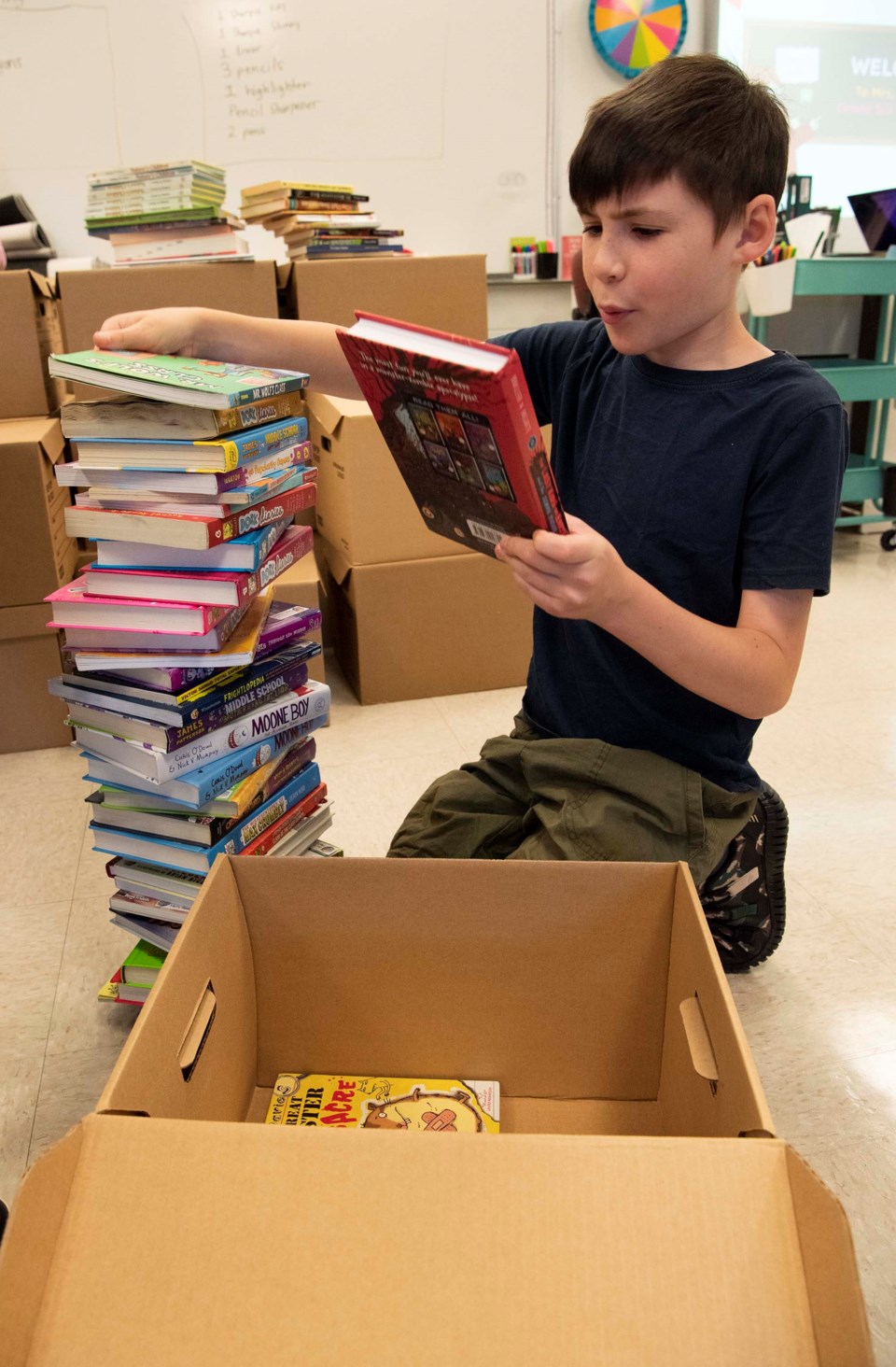Misty Reeve’s class at Kinosayo Elementary was a bibliographical blizzard last week as students worked to set up her library. Youths hauled novels and spooky pop-ups books out of banker’s boxes by the armload, gushing over cool finds and debating where to put them.
“I found the National Geographics!” cried Toran Buchholtz, as he cracked open a box filled with yellow-bordered magazines.
Reeve wasn’t telling the students what went where. Instead, as part of the school’s new inquiry-based learning program, she let them sort the books into dozens of categories they formulated themselves.
“They decide how the books are going to be organized and arranged,” she said.
“The library will belong to them.”
Kinosayo kicked off its inquiry-based learning program Sept. 2. The program is similar to the Pursuit program at W.D. Cuts run by teacher Mark Samuel, who is coincidentally the brother of Kinosayo principal Brian Samuel.
The idea for the program came up a few years ago when parents asked the district for a more student-led, less traditional way of learning, Brian said. After a lot of training and a two-year pandemic delay, staff at Kinosayo decided to roll out the program to six of their homerooms this year.
Traditional schooling sees a teacher plan activities and lessons based on the curriculum and give them to the student, Brian said. The inquiry approach has teachers present students with the goals of the curriculum and work with them to craft activities to reach those goals.
Everyone gets to the same learning outcome, but not everyone takes the same road to get there, explained Reeve, who has taught using inquiry-based techniques for decades. One student might demonstrate their understanding of mechanics by building a model out of blocks, for example, while another draws a machine on the computer and a third creates a poster. The idea is to give students choice and agency in their education, which research suggests helps with brain development.
“Having choices in the classroom will help them grow into adults who can make responsible choices,” Reeve said.
Reeve said she plans to ease students into inquiry-based learning by slowly ramping up the amount of choice available to them throughout the year.
She started last-week’s book sorting exercise by asking students to think about the difference between fiction and non-fiction, for example, and then had them write possible book categories on index cards. By the end of the year, she hopes to have the students research a global issue of their choice and craft a call-to-action video which will be shown to the rest of the school.
Brian said he hopes this program will help students get more excited about education and become better problem solvers.
Questions on the program should go to [email protected].




